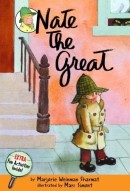Schools out! Begin a summer adventure with your child through books. Let your child’s imagination go wild and create a theme for books he would like to read this summer. Make it a challenge for the whole family by offering small rewards for each book read or each story a child has read to him.
If you child likes books related to tractors, planting gardens, or building sand castles, you can use the theme Dig into reading. This theme could also mean digging through your home library and re-reading your favorite books.
When my teen boys were younger, they loved to pretend they were camping out (somewhere in the house). Sometimes this meant throwing a sheet over the Living room table and pretending they were in a cave. For them, pitching a tent meant rearranging furniture to create the effect of being at a campground.
Our bonfire time consisted of sitting next to our sleeping bags in the middle of the floor and eating microwave popcorn. Of course there was a sharing of stories by flashlight.
I recently came across a fun idea recently, related to camps. The idea was to have a stuffed animal camp out. Since my boys are too old for this type of camp out, I challenged them to read a book about campouts or going to camp.
The book I selected to read was Ivy & Bean Make the Rules by Annie Barrows. Bean’s older sister gets to go to camp, but Bean is not old enough. Bean doesn’t really want to go to camp, but she comes up with a plan to create a camp of her own. With the help of her friend Ivy, rules are developed, a tent is made (using old curtains), and kids invited to join in.
One of the rules the girls develop is, “You can only have as much fun as you are willing to get hurt.” The girls are clever at finding ways to make their camp work. One of my favorite things about the book are the activities at the end.
Information is listed that tells you how to make your own camp; it lists what to do on day one through four. For example day one list says – pick a counselor, pick a name, make a tent, etc. There is also a word find and crossword puzzle that the reader can complete.
If your child enjoys solving mysteries, Nate the great by Marjorie Weisman Sharmat was a book. Nate the great is a youth detective who says he works alone. And he loves pancakes. One of his cases involved helping a friend find a lost picture. He asked questions, followed clues and satisfactorily solved the case.
At the end of the book there is a recipe for Nate’s Pancakes, directions for making cat crayons (melting old crayons) and Detective Talk (explains words that detectives use). Nate the great is a series that has many books from which to choose.
Do you have a book suggestion to jumpstart summer reading? Dig in and leave your suggestion.









